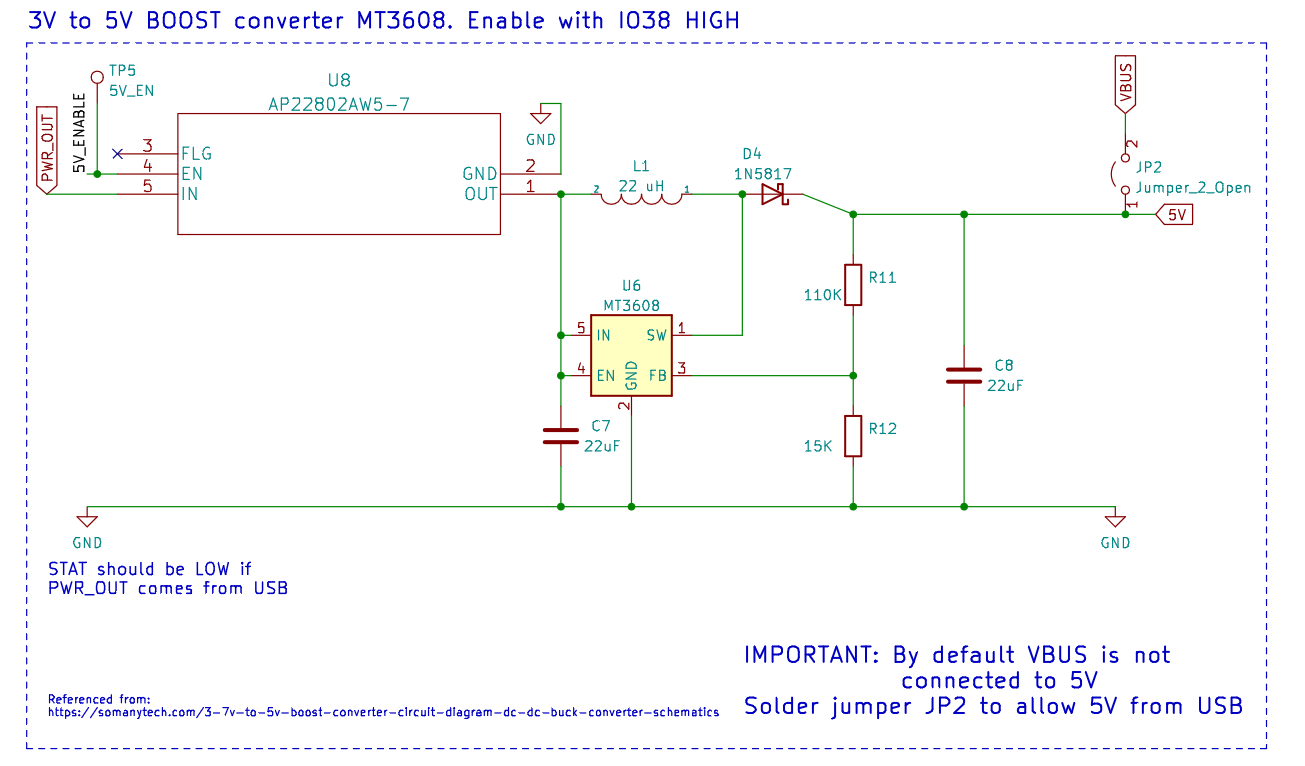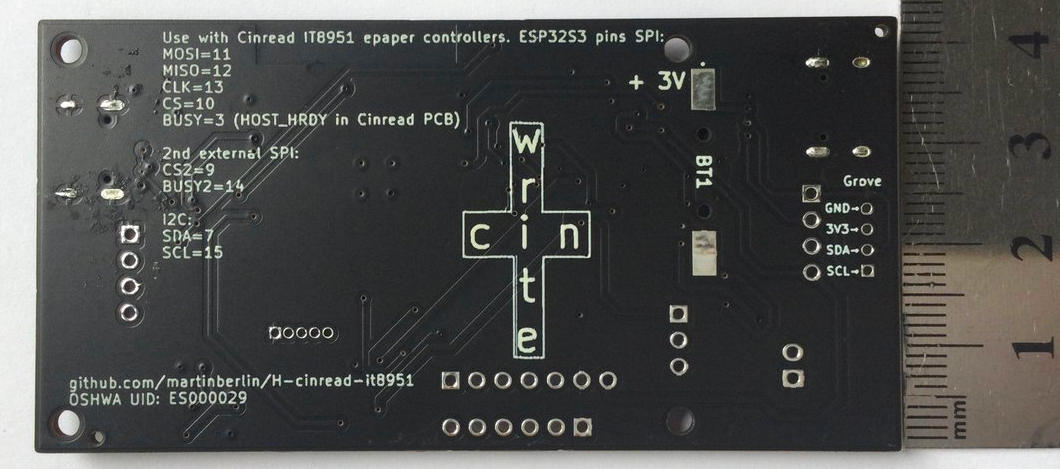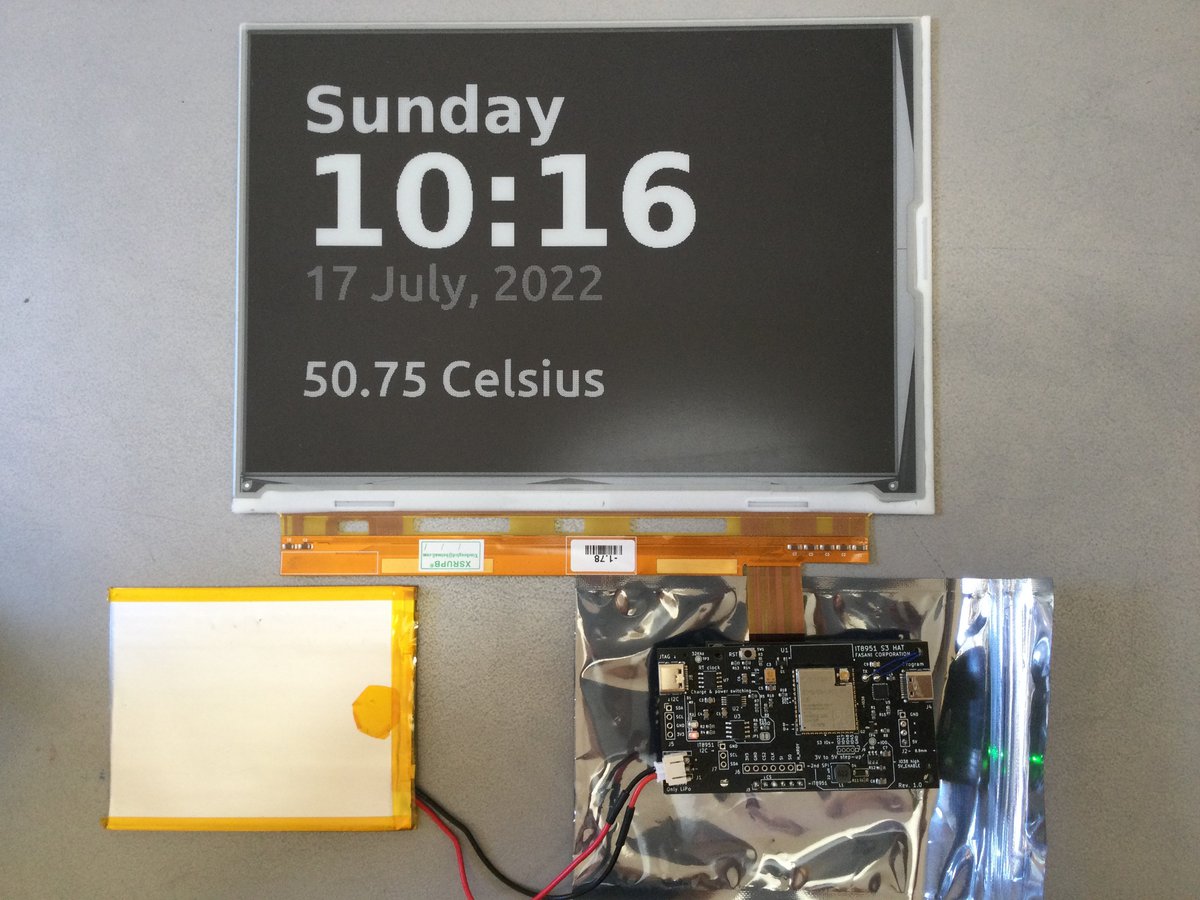Our ESP32S3 SPI master controller
The goal of the Cinwrite HAT is to provide WiFi, an RTC and 3.3 to 5V step-up for a fast epaper update driving IT8951 as SPI master Already in it's third revision Cinwrite has been already sold a couple of times on Tindie and it's powering some stores with epaper panels that are aware of time and display sensors information. ▲ Buy this PCB in our Tindie store
▼ Check what it offers
Open source Firmware demos
OSHWA certified design
Electronic schematics
▲ Buy this PCB in our Tindie store
▼ Check what it offers
Open source Firmware demos
OSHWA certified design
Electronic schematics
What is it?
The Cinwrite PCB is a HAT to use on top of DEXA-C097 IT8951 controller. Please note that this PCB is pin compatible with an IT8951 epaper controller that is actually sold by Good-Display. But more than that it is a full pfleged Espressif ESP32S3 board, that exposes an SPI interface, and 2 I2C connectors. The SPI interface has the possibility to control 2 peripherals offering their respective Chip Select and Busy pins. Below you can see an image showing what does what in the PCB.
Features offered:
- WiFi
- BLE. Important point: BLE, not Bluetooth classic (Only ESP32 has BT-classic)
- DS3231 real time clock
- Fast 40Mhz SPI
- Battery to 5V step-up (And a way to enable this boost converter)
- 3.7v LiPo battery charger
- I2C connectors (Sensors)
- Additional SPI connector (With own Busy & CS pin)



Video demo
In this demo it does render Unicode Chinese using Google Noto Font and a component called Open Font Render which renders vector fonts on the fly. The plan is to make open source demos that can be used in any language, not only with western characters, but supporting your native way of writing. This panels where so far featured only in Barcelona showing CO2, temperature and other readings in a factory in Martorell.Buy this PCB in our Tindie store